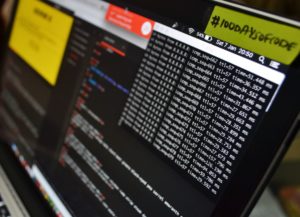Python is a powerful programming language that is widely used in many industries today. If you are looking to learn Python, you have come to the right place! In this blog post, we will discuss how to get started with Python and provide you with some resources that will help you learn the language. Let's get started!
What Is Python?
Python is a programming language that was created in the 1980s by Guido van Rossum. It is a widely used language these days, and it has many features that make it an attractive choice for beginners. Python is easy to read and write, and it has a large standard library that can be used for tasks such as data analysis and machine learning. Python is also a popular language for web development, and it can be used to create server-side applications.
If you're interested in learning Python, there are many resources available online. You can find tutorials, books, and videos that will help you get started with the language. You can also join a part time coding bootcamp to learn more not just about the programming language but also other programming skills. Python is a great choice for those who want to learn to code, and it can be used for a variety of tasks. So investing time in learning more about it is definitely worth it.
Why Learn Python?
Python is a versatile language that you can use on the backend, frontend, or full stack of a web application. Python is also great for data science and artificial intelligence applications. In addition, Python is relatively easy to learn compared to other programming languages. That’s why many beginners start with Python when they’re learning to code.
How to Get Started with Python
First, you'll need to download and install Python. You can get the latest version of Python from the official Python website (python.org). We recommend using the Anaconda distribution of Python, which comes with a lot of useful packages for data science and machine learning. Once you've installed Anaconda, you can create a Python environment by opening Anaconda Navigator and selecting the "Environments" tab. From there, you can create a new Python environment and install packages using the conda package manager.
Resources to Help You Learn Python
We recommend checking out the official Python documentation, which contains an excellent tutorial for beginners. You can also find many resources for learning Python online, including books, videos, and courses. One of our favorite resources is the Python Data Science Handbook by Jake VanderPlas. This book covers a wide range of topics in data science and machine learning, and it's a great way to learn Python if you're interested in those fields. If you want to dive even deeper into Python, we recommend taking a look at the source code of some of your favorite Python packages. This is a great way to see how experienced Python programmers write code, and it can give you some ideas for your projects.
So there you have it! A few tips on how to start learning Python. Hopefully, this has been helpful and gives you a little bit of direction. Remember to focus on one task at a time and to break things down into manageable chunks. Soon enough, you'll be writing Python code like a pro!


